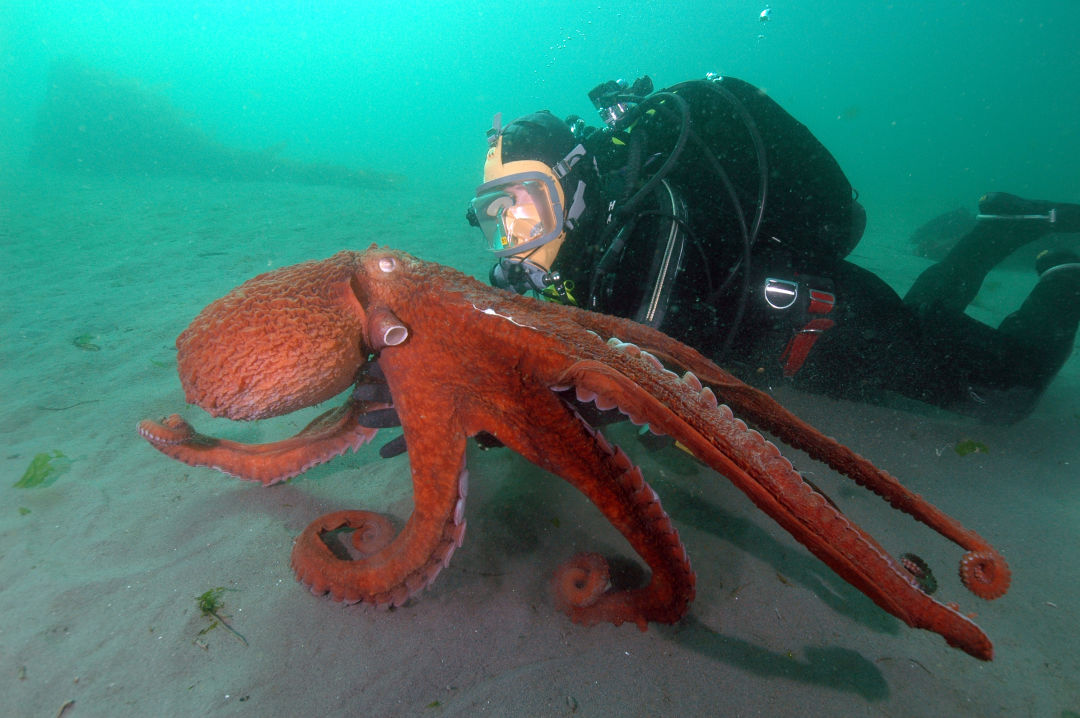

They, along with other octopus species, are considered the most intelligent invertebrates, rivalling even most mammals. They are found in the North Pacific Ocean, from shallow water down to 2000m (6600ft). They are generally a reddish-brown colour. The Giant Pacific Octopus is the largest known octopus species. The Giant Pacific Octopus, Enteroctopus dofleini, is a massive species of Cephalopod reserved to the most experienced aquarist.

Their keen intelligence makes them master escapologists!" Special thanks to Jeff Reindl and the Shaw Centre for the Salish Sea for the photos."The Giant Pacific is the largest of any octopus species and individuals can weigh-in in excess of 110lb. Want to learn more? Here are a few links: Their intelligence and excellent eyesight can sometimes make them seem quite alien as they observe us observing them.īonus fun fact: Octopuses have three hearts and blue blood! Perhaps they’re the marine version of nobility! They also exhibit very distinct individual personality traits. Now that’s devotion to one’s offspring!Ĭephalopods have large, complex brains and well-developed nervous systems, with the capacity for long-term memory, learning, tool use and problem-solving. The giant Pacific octopus lives only 3–4 years females will lay eggs and tend to them, fanning and oxygenating them while fasting, and then will die.
#Giant pacific octopus skin#
They can also change the texture of their skin which allows them to very easily blend into their surroundings. Expansion and contraction of these cells (under direct control of the brain) causes colour to change very quickly. Their skin is covered with small coloured cells called chromatophores, under which lie reflective iridocytes. Like other cephalopods (which include the squid, octopus, cuttlefish and nautilus), they’re masters of camouflage. Common enrichment for captive octopuses in aquariums includes making dinner a bit harder to get to, using puzzle boxes and even things like child-proof pill bottles (which, let’s face it, are sometimes hard for even adults to open!).Ī well-publicized escape is rather hilariously described here. Not only can they get out of things they can also get into them. They’ve been known to pry the lid off their tank, climb out and cross the floor, climb up to another tank containing a tasty treat, remove the lid, capture their prize and then make the return journey home (sometimes to the great puzzlement of their caretakers who wonder where the rest of the animals have disappeared to). Octopuses, and the giant Pacific octopus in particular, are expert escape artists. Preferred prey includes crabs, clams, shrimp and fish, but they’ve also been known to go after birds, like this octopus photographed just off the Victoria breakwater a few years ago attacking a gull. Like true introverts, giant Pacific octopuses exhibit a preference for staying in their dens unless enticed to exit by the possibility of a meal. These shy predators can be found anywhere from the intertidal zone to depths of over 1,500 ft. Males have one modified arm, used to deposit sperm packets into the female. Squid, on the other hand, have eight arms and two tentacles, which only have suction cups at the end.

They’re also venomous, and with a sharp beak can deliver a nasty bite if provoked.Īrm or tentacle? Octopuses have eight arms, each of which has two rows of suction cups the entire length of the arm. Octopuses are molluscs, belonging to the same phylum as clams, snails and chitons. across and weighing around 110 lb., they’re bigger than some of our crew members! The largest ever recorded weighed close to a whopping 600 lb! Let’s just get it out there right off the bat-this species holds the record for the largest octopus in world. In honour of World Octopus Day, let’s explore a few fun facts about the giant Pacific octopus: Found throughout the coastal North Pacific, this charismatic invertebrate thrives in the cold, productive waters off the BC coast. The giant Pacific octopus ( Enteroctopus dofleini) is a fascinating creature.


 0 kommentar(er)
0 kommentar(er)
